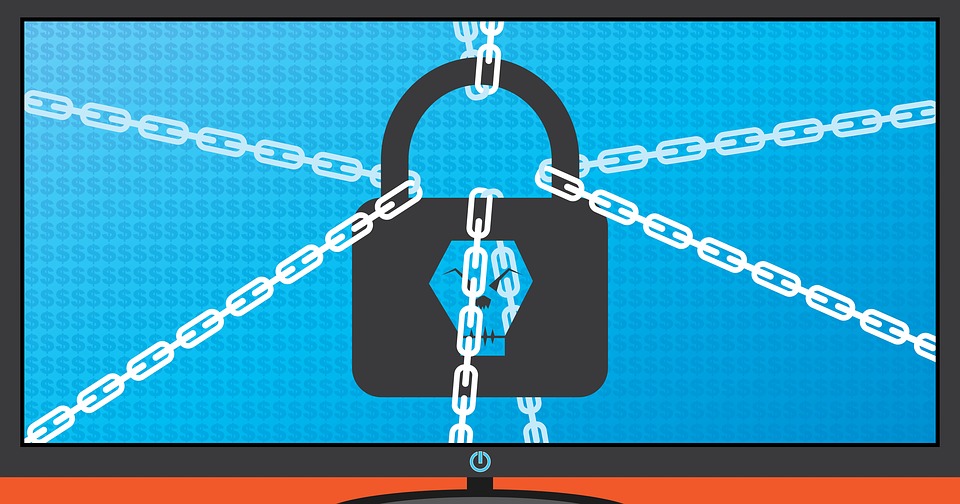Table of Contents
Definition of ransomware
Ransomware is a type of hateful software that cybercriminals use to prevent you from accessing their data. Digital blackmailers encrypt the files on your system, add extensions to the compromised data, and hold it hostage until the ransom paid. During the initial infection, the ransomware may feast on shared drives, servers, connected computers, and other systems accessible through your network. Modern ransomware was developed during periods of rest or pregnancy.
During this time, cybercriminals extort corporate data or other PII, and malware can back up copies alongside legitimate data, canceling the use of backups for salvage. If the ransom demands are not met inside the period, the encrypted data or the system not available, the data may be removed from the software, and the decryption key may be defaced. Blackmail becoming more common, and if an organization refuses to pay the ransom, the stolen data can be leaked or sold on the darknet. In short, ransomware a possible nightmare for the unprepared IT administrator.
This Is How Ransomware Works
Ransomware invades your network in several ways, the most popular of which downloading it via a spam email attachment. Then the download starts the ransomware program that attacking your system. Other forms of access include social engineering, downloading malware directly from a website on the Internet, or clicking on “malvertising” – fake advertisements that promote ransomware. Malware can also spread via chat messages or even removable USB storage devices.
Typically, the software enters your network via an executable file in a ZIP folder, embedded in macros in Microsoft Office documents, or disguised as fax or other usable attachments. Then the download file encrypts your data, adds a delay to your files, and makes them inaccessible. The more sophisticated versions of the software self-propagating and can function without human intervention. Recognized as “drive-by” attacks, this form of ransomware taints your scheme through Security Holes In Various Browser Add-Ons.
Ransomware Statistics
- Last year, there were more than 304 million ransomware attacks worldwide. A new group confronted every 11-14 seconds.
- 73% of all ransomware spells were successful with data encryption.
- 55% of attacks affect companies with 100 or fewer employees. 75% of the attacks involved organizations with less than $ 50 million in annual revenue.
- According to Microsoft, almost 97% of all ransomware infections take less than 4 hours to infiltrate their target successfully. The fastest can take over the organizations in less than 45 minutes.
- Ransomware downtime has increased by 200% over the past year.
- The downtime costs associated with ransomware attacks are 2300% higher than the average ransom note.
- Hackers employed 27% of ransomware victims.
- The average rescue need grew to over $ 178,000 in 2020. However, the intermediate rescue need for an SMB only $ 5,900.
- Over 95 new families of ransomware have been discovered in the past two years.
The global cost of ransomware restoration will surpass $ 20 billion in 2021.
Without gainful for the key, it very tough to decrypt files after an attack. A tested, tested, and secure backup eliminates the need to succumb to the demands of ransomware.
Examples of ransomware
While there a multitude of iterations in thousands of flavors, our goal to shed light on some of the most common attacks floating around today:
1) Evil –
Evil, also known as Sodin or Sodinokibi, is a variant of Ransomware-as-a-Service (RaaS) responsible for a third of all ransomware incidents, according to IBM’s Security X-Force. Sodinokibi spreads in some ways, including unpatched VPNs, exploit kits, remote desktop protocols (RDP), and spam email. Sodinokibi became the fourth most popular ransomware within just four months of its discovery.
2) Ryuk –
Ryuk a popular different used in beset attacks on health organizations (like the attack on United Health Services in late 2020). Ryuk often spreads via other malware (e.g., Trickbot) or email phishing attacks and exploit kits. Ryuk’s attacks on healthcare almost doubled in 2020 from 2.3% of all attacks in the second quarter to 4% in the third quarter.
3) Robins –
Robinhood holds a computer or computer system captive and generally reached through a phishing attack or other security breach. The files encrypted, and a ransom note issued. Usually, when collecting payments in Bitcoin, after receiving the ransom fee, the decryption keys provided, and the computer system is restored.
4) Double Payer –
This ransomware is known to attack businesses by accessing administrator credentials and spreading the infection over the Windows network. In reported cases, perpetrators have known to contact their victims and request additional payments.
5) Snake –
First identified in the fourth quarter of 2019, SNAKE ransomware, known for its destruction in the industrial sector, represented 6% of all ransomware attacks in 2020. SNAKE targets industrial control systems, disables ICS processes freeze virtual machines, and steals administrator credentials to distribute and encrypt files over the network.
6) Phobos –
Another variant of RaaS, Phobos, has observed in attacks against SMBs in which cybercriminals gain unauthorized access to a network via unprotected RDP ports. Phobos similar to the CrySiS and Dharma ransomware. Unfortunately, due to the complexity of the recovery process, victims report mixed recovery results even after paying the ransom.
How To Protect Yourself From Ransomware
Whether you need to know how to protect against REvil, Ryuk, or one of the thousands of other daily attacks, the first component of the solution educating your employees on clicking on suspicious links and downloading suspicious attachments. Training and challenging help and even answers help provide visual cues and feedback to empower front-line personnel further.
This will not prevent all attacks, but it will help. It’s also important to make sure your servers regularly updated, as the latest patches often protect many of the vulnerabilities exploited by ransomware hackers from Microsoft. Not keeping up to date can create big problems down the road. Whatever happens, you must prepare for the reality that you could attacked. In addition to backups, you must have proven and secure backups and a well-documented disaster recovery plan that outlines the steps to resolve an attack. When it comes to data protection, consider these five components:
To Protect
Use backups! Follow the 3-2-1-1 rule. Keep three reproductions of your data on two changed media types, one version stored externally, and one copy immutable (immutable). Inflexible media can spinning media, such as a hard drive or tape disconnected from the network and moved to a remote and secure secondary location. Some providers offer immutable storage through a cloud service. If you affected by ransomware, external backups can help you recover more efficiently. When considering off-site options, keep in mind that offline backups take longer to restore, and offline backups can more challenging to test. Faster recovery times can achieved by replicating to an active target such as
Make Backup Copies
Recent results show that more than 83% of malware is designed to break into Windows systems. The ransomware mainly targets Windows operating systems. Because backup systems can require many role-based instances for centralized management, data movement, reporting, search, and analysis, backing up all these machines can complex. Consider locking them in to do only what they need to do and nothing else. Newer solutions based on integrated backup devices generally eliminate this complexity and are hardened at the factory. Security can be much simpler on these more unique architectures.
Test
Periodically test the feasibility of your backup and disaster recovery strategy. Many factors can prevent a successful recovery, including attempting to restore from backups of already infected computers. Automated recovery testing an attractive trend in the data protection and management industries. More use should made of these features as security threats increase their impact on IT.
Detect
Detecting ransomware early means faster recovery. More and more backup providers using predictive analytics and machine learning to identify potential attacks and warn administrators of abnormal data fluctuations when creating backups. Analyzing data based on various heuristics provides insights into threats that traditional security tools overlook and can particularly useful for detecting infections that are slow to burn.
Immediate Recovery
After you’ve effectively backed up your data and tested its recoverability, you can restore your network to a specific recovery point and avoid downtime, data errors, and lost revenue.
Ransomware attacks are fierce. It’s not about if, but when . prepare with Unitrends’ complete line of defense
More Inside Techinfofdy.com
How To Unlock an iPhone 5, 6, 6s, and 7
How To Fix Error Code [Pii_email_037d07812f905a3927ae]
5 Best Enterprise Password Management Software

